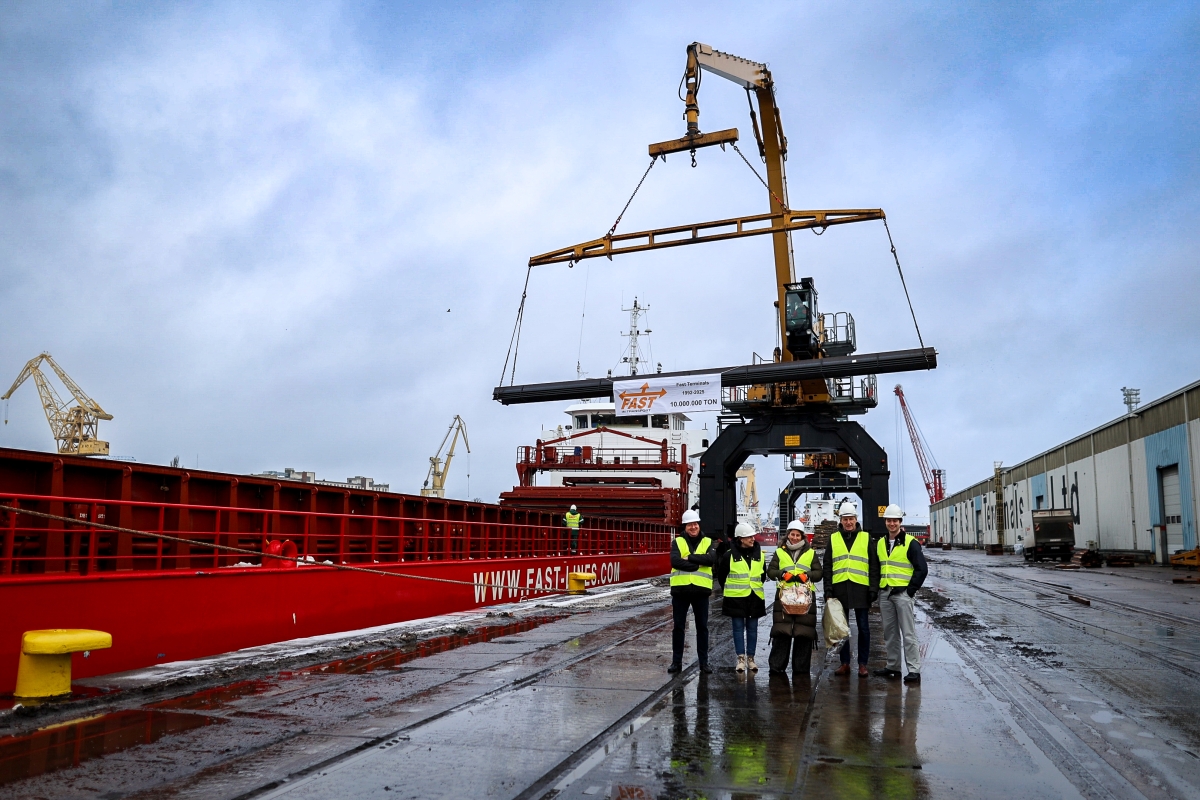
The first ship handled at Fast Terminals was "Martrans": on March 21, 1992, it loaded 500 tons of copper cathodes from KGHM. After nearly 33 years, at the beginning of 2025, the company celebrates the 10 millionth ton transshipped at the terminal.
Here is the history of the first terminal in Polish ports built at the Belgian quay next to the EWA elevator by a joint-venture company established by the English company Fast Shipping and the Szczecin-Świnoujście Ports Authority.
From the very beginning, Fast Terminals was connected with a regular shipping service initiated by the late Mr. Herman Scheers, the owner of the Belgian company Fast Lines from Antwerp.
This shipping line still operates today – practically the last general cargo line from Szczecin.
Fast Terminals, initially managed by Krzysztof Pilarski and later by Jan Stasiak, went through various phases depending on changing economic and commercial conditions. From a terminal serving 100% export cargo, it now handles a majority of import cargo.
In 2007, Fast Lines purchased shares from ZPSŚ and became the sole owner of the terminal.
In 2016, the name Fast Terminals (in plural) gained its proper meaning through an investment made by Fast in the Free Customs Zone, where a terminal with a warehouse for handling bulk cargo was created. The company remains in the hands of the Scheers family’s next generation and has been making history at the Szczecin port for 33 years. Today, it celebrates the transshipment of the 10,000,000th ton.
The symbolic anniversary ton was loaded onto the ship "Fast Sim," also owned by Fast Lines.
It was a bundle of steel produced at the ArcelorMittal Dąbrowa Górnicza plant, destined for the English port. This can be considered as the bookend connecting the company’s founding history with its present.
"We feel that this milestone is an important point in the company’s history," says Piotr Maj, CEO of Fast Terminals Sp. z o.o. "And this history is already continuing," he adds.
Fast Terminals in Szczecin Port closed the year with a significant increase in transshipments – nearly 42%. It is the largest wood transshipper in the port and is currently on a growth-oriented course.


